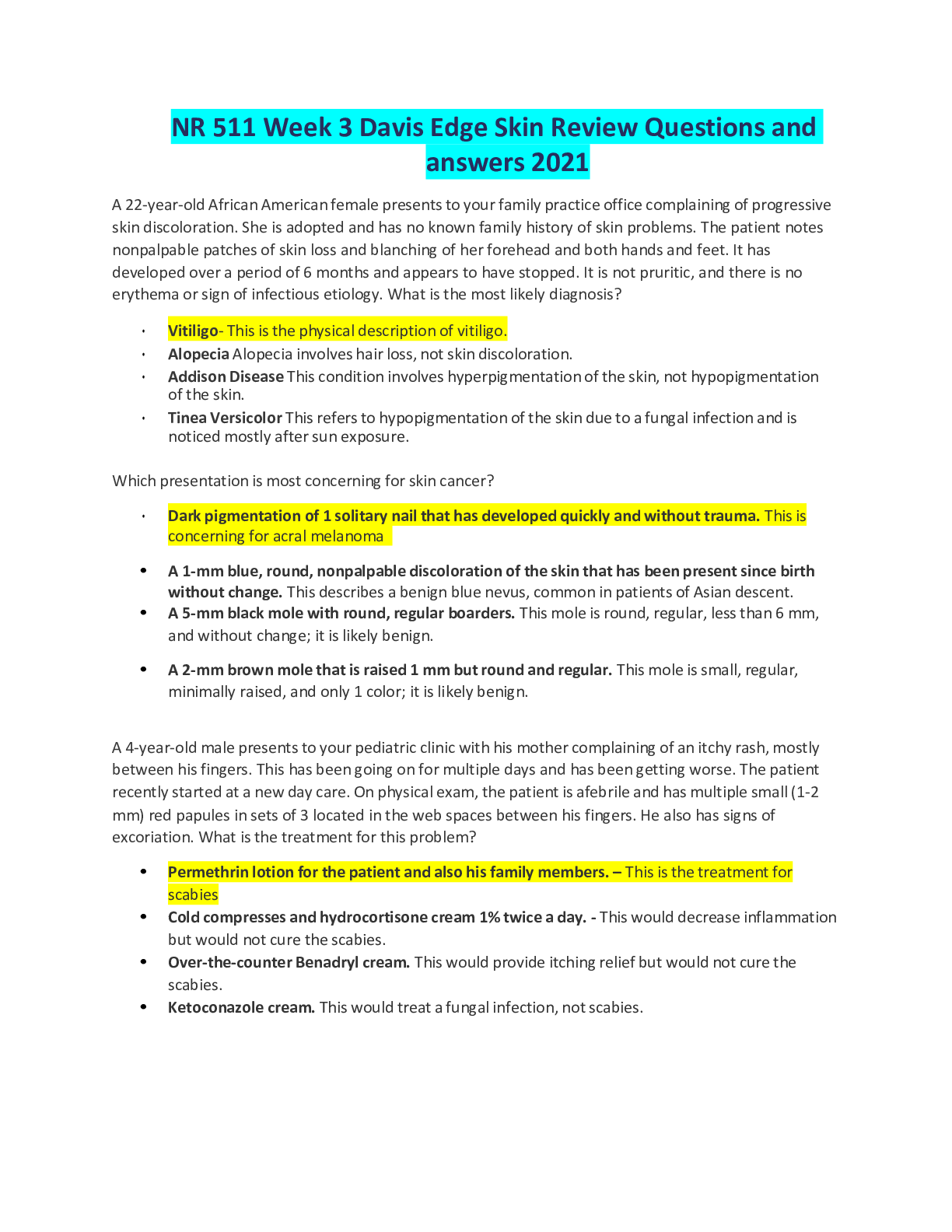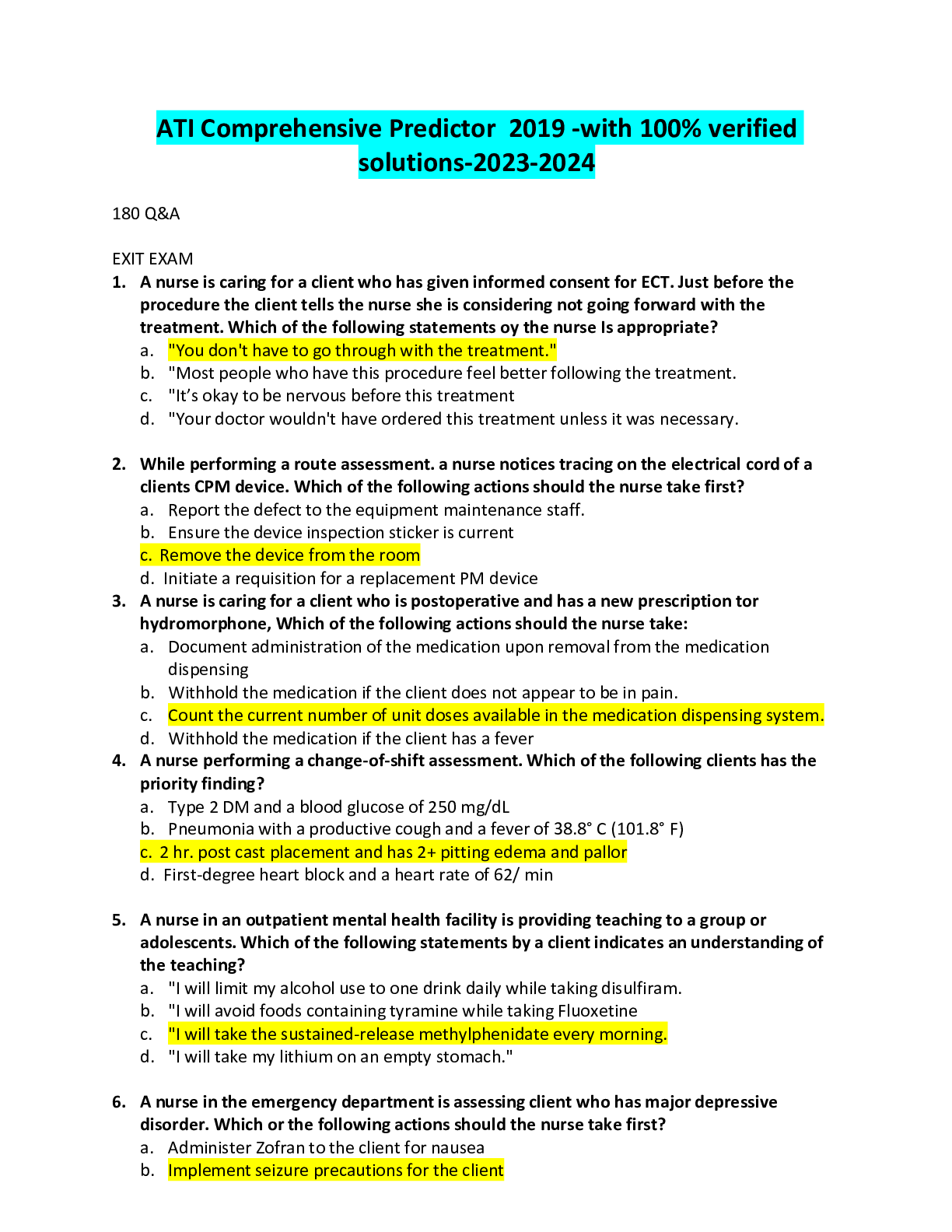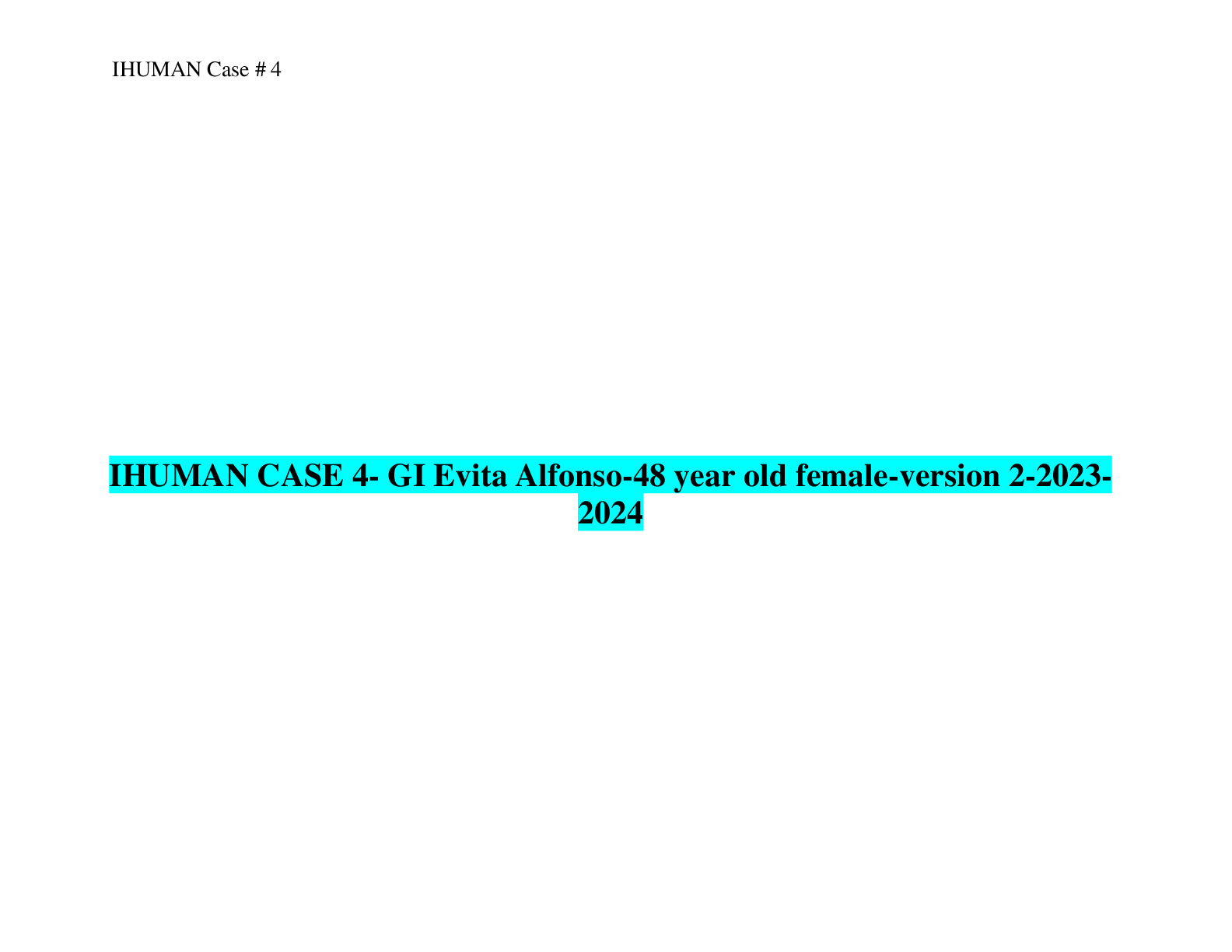NR 511 Week 3 Davis Edge Skin Review Questions and answers 2021
Document Content and Description Below
A 22-year-old African American female presents to your family practice office complaining of progressive skin discoloration. She is adopted and has no known family history of skin problems. The patien... t notes nonpalpable patches of skin loss and blanching of her forehead and both hands and feet. It has developed over a period of 6 months and appears to have stopped. It is not pruritic, and there is no erythema or sign of infectious etiology. What is the most likely diagnosis? • Vitiligo- This is the physical description of vitiligo. • Alopecia Alopecia involves hair loss, not skin discoloration. • Addison Disease This condition involves hyperpigmentation of the skin, not hypopigmentation of the skin. • Tinea Versicolor This refers to hypopigmentation of the skin due to a fungal infection and is noticed mostly after sun exposure. Which presentation is most concerning for skin cancer? • Dark pigmentation of 1 solitary nail that has developed quickly and without trauma. This is concerning for acral melanoma • A 1-mm blue, round, nonpalpable discoloration of the skin that has been present since birth without change. This describes a benign blue nevus, common in patients of Asian descent. • A 5-mm black mole with round, regular boarders. This mole is round, regular, less than 6 mm, and without change; it is likely benign. • A 2-mm brown mole that is raised 1 mm but round and regular. This mole is small, regular, minimally raised, and only 1 color; it is likely benign. A 4-year-old male presents to your pediatric clinic with his mother complaining of an itchy rash, mostly between his fingers. This has been going on for multiple days and has been getting worse. The patient recently started at a new day care. On physical exam, the patient is afebrile and has multiple small (1-2 mm) red papules in sets of 3 located in the web spaces between his fingers. He also has signs of excoriation. What is the treatment for this problem? • Permethrin lotion for the patient and also his family members. – This is the treatment for scabies • Cold compresses and hydrocortisone cream 1% twice a day. - This would decrease inflammation but would not cure the scabies. • Over-the-counter Benadryl cream. This would provide itching relief but would not cure the scabies. • Ketoconazole cream. This would treat a fungal infection, not scabies. Which of the following patients would not be at risk of Candida infection? • A patient with a history of coronary artery disease. Coronary artery disease doesn’t increase the risk of Candida infection. • A diabetic patient. Diabetes increases the risk of Candida infection. • A patient requiring home antibiotics while recovering from an operation for an infected hernia. Use of long-term antibiotics increases the risk of Candida infection. • A patient using a steroid regimen for asthma control Use of long-term steroids increases the risk of Candida infection. A 3-year-old patient presents to your pediatric office with her mother. She has recently been started in day care. Her mother noted slight perioral erythema on the right side of the patient’s mouth prior to bed last night. The patient awoke today with 3 small, superficial, honey-colored vesicles where the erythema was last night. The patient has no surrounding erythema. She had no difficulty eating this morning and is active and energetic and doesn’t appear lethargic or fatigued. She is also afebrile. How would you treat this child? CONTINUED....... [Show More]
Last updated: 2 years ago
Preview 1 out of 30 pages

Buy this document to get the full access instantly
Instant Download Access after purchase
Buy NowInstant download
We Accept:

Reviews( 0 )
$16.00
Can't find what you want? Try our AI powered Search
Document information
Connected school, study & course
About the document
Uploaded On
Apr 16, 2022
Number of pages
30
Written in
Additional information
This document has been written for:
Uploaded
Apr 16, 2022
Downloads
0
Views
61


























